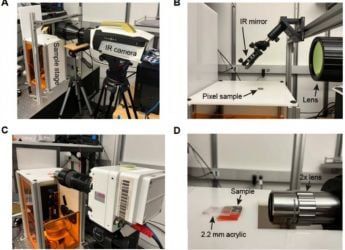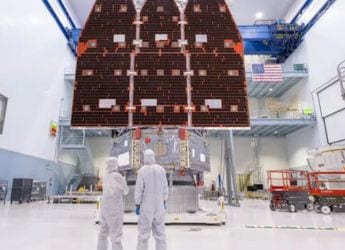- Home
- Science
- Science News
- Vera C. Rubin Observatory Unveils First Images, Hints at Universe’s Dynamic Secrets Ahead
Vera C. Rubin Observatory Unveils First Images, Hints at Universe’s Dynamic Secrets Ahead
Rubin Observatory’s first image captures 10 million galaxies, launching the next era of sky mapping.

Photo Credit: RubinObs/NOIRLab/SLAC/NSF/DOE/AURA
First Rubin image captures just 0.05% of the 20 billion galaxies to be mapped in 10 years
From a mountaintop in Chile, the Vera C. Rubin Observatory has taken the first public images of the cosmos, which represent the start of the observatory's 10-year Legacy Survey of Space and Time (LSST), which it will capture each and every night. With the world's largest digital camera, this new observatory will sweep the entire southern sky every three nights. In its first image, it covered 10 million galaxies in the universe and showed only one section, 0.05%, of the roughly 40 billion celestial objects that it will ultimately observe. The scientific world has been abuzz with speculation about discoveries to come.
Rubin Observatory Captures 54M-Light-Year Virgo Cluster, Unveils Hidden Galaxies and Star Birth Regions
As per a report by Space.com, the picture shows the Virgo cluster, which is some 54 million light years away. The observatory's 8.4-metre Simonyi Survey Telescope and advanced LSST Science Pipelines software enabled the capture of breathtaking detail across a region 45 times the size of the full Moon. The scientists have called the images groundbreaking, and the observatory is expected to be able to tell them in real time about variable stars, supernovas, and even asteroids.
Rubin's sensitivity to changes in brightness, scientists hope, will allow it to catch transient cosmic events, such as stars that die and planets that cross in front of other stars. Such sightings will enable measurements of cosmic distances and provide vital data for investigations of dark matter and dark energy — two of the most mysterious and poorly understood forces in the universe.
Preview images, such as the views of the Trifid and Lagoon Nebulae, showed spectacular structures created by star birth inside dense cloud cores. The observatory's unique capability to produce continuous wide-field images promises a dynamic, decade-long “movie of the universe”.
With LSST now launching, astronomers are bristling with excitement to see what comes from the survey that might topple our best understanding of the universe. The researchers involved have mentioned that they are “beyond excited” about what they might learn in the next few years.
Get your daily dose of tech news, reviews, and insights, in under 80 characters on Gadgets 360 Turbo. Connect with fellow tech lovers on our Forum. Follow us on X, Facebook, WhatsApp, Threads and Google News for instant updates. Catch all the action on our YouTube channel.
Related Stories
- Samsung Galaxy Unpacked 2025
- ChatGPT
- Redmi Note 14 Pro+
- iPhone 16
- Apple Vision Pro
- Oneplus 12
- OnePlus Nord CE 3 Lite 5G
- iPhone 13
- Xiaomi 14 Pro
- Oppo Find N3
- Tecno Spark Go (2023)
- Realme V30
- Best Phones Under 25000
- Samsung Galaxy S24 Series
- Cryptocurrency
- iQoo 12
- Samsung Galaxy S24 Ultra
- Giottus
- Samsung Galaxy Z Flip 5
- Apple 'Scary Fast'
- Housefull 5
- GoPro Hero 12 Black Review
- Invincible Season 2
- JioGlass
- HD Ready TV
- Laptop Under 50000
- Smartwatch Under 10000
- Latest Mobile Phones
- Compare Phones
- Jolla Phone
- Realme P4x 5G
- OnePlus Ace 6T
- Nubia Flip 3
- Nubia Fold
- OPPO A6x 5G
- Samsung Galaxy Z TriFold
- Poco F8 Ultra
- Asus ProArt P16
- MacBook Pro 14-inch (M5, 2025)
- OnePlus Pad Go 2
- Poco Pad M1
- Just Corseca Skywatch Pro
- Honor Watch X5
- Acerpure Nitro Z Series 100-inch QLED TV
- Samsung 43 Inch LED Ultra HD (4K) Smart TV (UA43UE81AFULXL)
- Asus ROG Ally
- Nintendo Switch Lite
- Haier 1.6 Ton 5 Star Inverter Split AC (HSU19G-MZAID5BN-INV)
- Haier 1.6 Ton 5 Star Inverter Split AC (HSU19G-MZAIM5BN-INV)

















